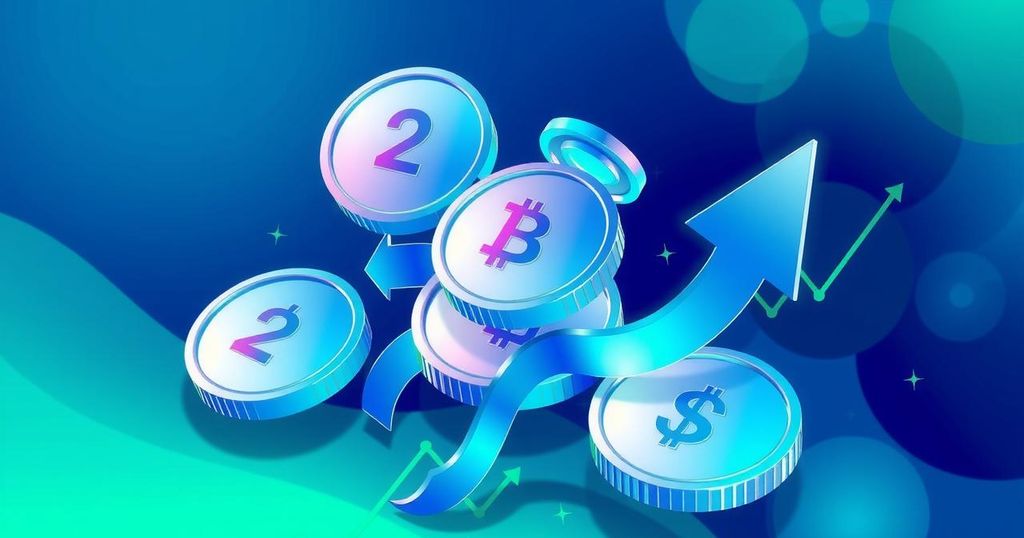XRP: Revolutionising Liquidity in the Tokenised Banking Era
XRP is positioning itself at the forefront of tokenized banking, offering crucial liquidity solutions for financial institutions. However, regulatory challenges related to its classification and compliance issues could hinder adoption. Looking ahead, XRP’s future is promising with potential price increases as banks demand more of it, making it a noteworthy investment opportunity as digital banking evolves.
The banking sector is undergoing a transition towards tokenized solutions, with XRP positioned to revolutionise liquidity within this framework. As a promising asset for financial institutions, XRP could significantly alter the perception and utility of digital currencies in banking. However, potential regulatory obstacles may impede its broader adoption, making it vital for investors to grasp these complexities as they foresee XRP’s future in the evolving cryptocurrency landscape.
XRP is emerging as an essential element in the realm of crypto banking, especially as traditional fractional reserve banking reveals its limitations. Financial institutions now seek genuine on-chain liquidity rather than relying solely on debt instruments, necessitating the inclusion of actual assets. XRP offers a bank-friendly cryptocurrency solution, facilitating seamless transactions alongside the liquidity banks need in an increasingly tokenised economy.
Crypto analyst Brett highlights the looming demand for substantial liquidity from banks amid the rise of tokenization, which could reach billions of XRP in requirement. Consequently, this demand may elevate XRP’s profile as a primary source for liquidity, influencing both its demand and market pricing significantly.
Nevertheless, XRP encounters significant hurdles pertaining to regulatory measures that could hinder its adoption across banking sectors. The foremost concern is the ongoing regulatory ambiguity regarding its classification. The SEC lawsuit against Ripple centred around whether XRP qualifies as a security, which would entail stricter regulations. While a court has clarified that XRP isn’t a security in secondary markets, institutional sale regulations remain uncertain.
Banks require definitive regulatory frameworks prior to engaging with cryptocurrencies like XRP. The fear of potential legal ramifications could deter them from participation. Compliance with anti-money laundering (AML) regulations is also paramount, with Ripple having faced penalties in the past for AML infringements, leading to increased caution among banks toward forming partnerships.
The regulatory environment is intricate, as U.S. banks are regulated by various entities including the OCC, Federal Reserve, and SEC. These institutions must obtain explicit approvals before considering XRP, resulting in additional delays and complexities in the process.
Looking forward, XRP’s future appears promising, particularly as it aligns with a tokenization market projected to reach $34 trillion. Increased demand from banks for significant amounts of XRP could lead to scarcity, driving prices up. Analysts theorise that capturing even a fraction of this market could propel XRP’s value substantially, with predictions estimating prices could reach as high as $1,000.
Brett suggests that as scarcity intensifies, retail holders might become the primary source for banks looking to procure XRP, possibly resulting in banks paying a premium to obtain the tokens they require. This evolving scenario positions XRP as a crucial liquidity source within the tokenised banking model, potentially escalating its market cap into the trillions.
In summary, despite the notable potential of XRP as a liquidity solution for banks, it faces several challenges, including regulatory ambiguity, compliance complications, and competitive pressures. Nonetheless, as the demand for digital currencies in banking increases, XRP’s significance might also grow. For investors, recognising XRP’s potential early on offers a timely opportunity, especially as the banking landscape increasingly embraces cryptocurrency solutions.




Post Comment